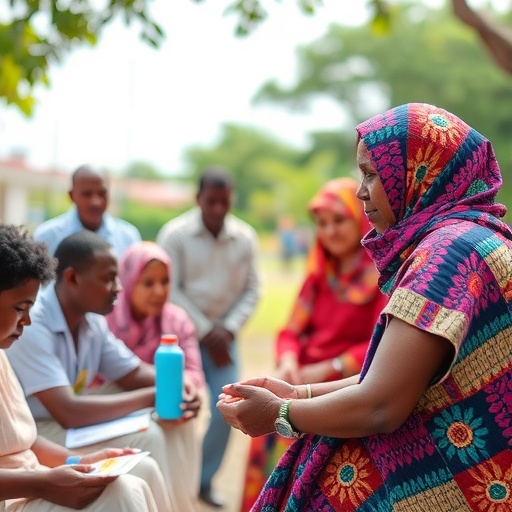Hip replacement surgery is highly successful in restoring mobility, relieving pain and improving quality of life. Each year in the United States, more than 330,000 hip replacement surgeries are performed, and that number is expected to almost double by the year 2030.
Even though hip replacement is widely considered one of the most successful surgeries performed today, as with all surgical procedures, complications may occur. Some patients may require revision surgery many years later after the original implant wears out or if they experience hip dislocation.
Previously, surgeons were unaware why certain hip replacement patients experience dislocations. However, recently a new assessment tool before revision hip replacement surgery has significantly reduced the rate of recurrent dislocations compared to a standard evaluation. The new tool was created by Jonathan M. Vigdorchik, MD and colleagues at Hospital for Special Surgery (HSS) and NYU Langone Orthopedic Hospital. Their study is accepted for publication in a 2019 issue of The Bone & Joint Journal.
“We were very surprised that the dislocation rate was only 3% for patients who received the new presurgical assessment compared to 16% for those who did not,” says Dr. Vigdorchik, a hip and knee surgeon at HSS. “We knew that spine function affects hip replacement outcomes, but not to this magnitude.” Dr. Vigdorchik and colleagues also found that without this new evaluation method, 77% of inappropriately positioned hip implants would not have been identified.
The new classification tool, called the Hip-Spine Classification in Revision Total Hip Arthroplasty (THA), allows surgeons to evaluate spinal function and mobility when planning revision surgery by analyzing a series of X-ray images of the spine and hip, taken from lying down, standing and sitting positions.
The study evaluated outcomes for 222 patients who underwent revision hip replacement for recurrent instability from January 2014 to January 2017 at HSS and NYU. The researchers compared results for 111 patients who received the new spine function assessment to a matched group of 111 patients who did not.
Analyzing the images, which included calculating the changes in pelvic tilt between standing and sitting positions, provided more robust information about how patients’ spine function affected hip alignment than a standard assessment that only examined images taken in the lying down position. The images were taken with advanced imaging equipment (EOS), but Dr. Vigdorchik says that the new assessment protocol can also be used with standard X-rays.
The tool assigns a simple score to each patient’s results: “1” for normal spine alignment or “2” for a loss of the normal curvature at the base of the spine called a flatback deformity; and “A” for normal spine mobility or “B” for a stiff spine. The score informs the approach for revision surgery.
“We also discovered a group of patients with spine stiffness that often go unrecognized,” says Dr. Vigdorchik. “In a group of 61 patients who had not had previous spine surgery, our tool revealed that 74% had stiff spines, allowing us to take this into account when planning their revision surgeries.” While spinal stiffness is a risk factor for future dislocations it is usually anticipated only in patients who have had prior spinal fusion procedures. However, our findings showed that this is not always the case.
Surgeons at HSS and NYU started adopting the new assessment approach in 2014. “We hope our study draws awareness to the need for spinal evaluation and that more centers conducting hip replacement surgery will implement our protocol to help their patients,” says Dr. Vigdorchik. “Few centers in the world are looking at this. Based on our work to date, we are collaborating with colleagues at Stanford University and the Mayo Clinic to conduct a multi-center study to collect more evidence. We hope that one day, this approach becomes the standard of care.”
Dr. Vigdorchik and colleagues received an award for the best poster at the AAOS 2018 Annual Meeting for a previous study that reported the impact of using the new tool for patients having a first hip replacement surgery. “Our most recent results for patients undergoing revision surgeries add to our previous work in the frontline setting and underscore the importance of conducting a robust evaluation of spine function before hip replacement surgery. We have reached an era where we can prevent many errors in hip replacement before even doing the surgery with a proper and complete pre-surgical evaluation,” said Dr. Vigdorchik.
###
About HSS | Hospital for Special Surgery
HSS is the world’s leading academic medical center focused on musculoskeletal health. At its core is Hospital for Special Surgery, nationally ranked No. 1 in orthopedics (for the ninth consecutive year) and No. 3 in rheumatology by U.S.News & World Report (2018-2019). Founded in 1863, the Hospital has one of the lowest infection rates in the country and was the first in New York State to receive Magnet Recognition for Excellence in Nursing Service from the American Nurses Credentialing Center four consecutive times. The global standard total knee replacement was developed at HSS in 1969. An affiliate of Weill Cornell Medical College, HSS has a main campus in New York City and facilities in New Jersey, Connecticut and in the Long Island and Westchester County regions of New York State. In addition, HSS will be opening a new facility in Florida in late 2019. In 2018, HSS provided care to 139,000 patients and performed more than 32,000 surgical procedures, and people from all 50 U.S. states and 80 countries travelled to receive care at HSS. In addition to patient care, HSS leads the field in research, innovation and education. The HSS Research Institute comprises 20 laboratories and 300 staff members focused on leading the advancement of musculoskeletal health through prevention of degeneration, tissue repair and tissue regeneration. The HSS Global Innovation Institute was formed in 2016 to realize the potential of new drugs, therapeutics and devices. The HSS Education Institute is the world’s leading provider of education on musculoskeletal health, with its online learning platform offering more than 600 courses to more than 21,000 medical professional members worldwide. Through HSS Global Ventures, the institution is collaborating with medical centers and other organizations to advance the quality and value of musculoskeletal care and to make world-class HSS care more widely accessible nationally and internationally.
Media Contact
Monique Irons
[email protected]




